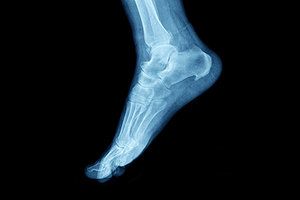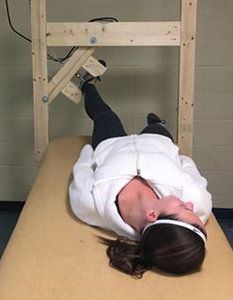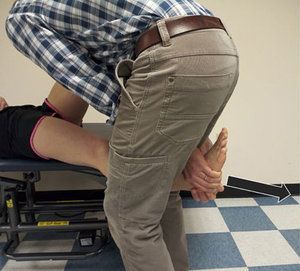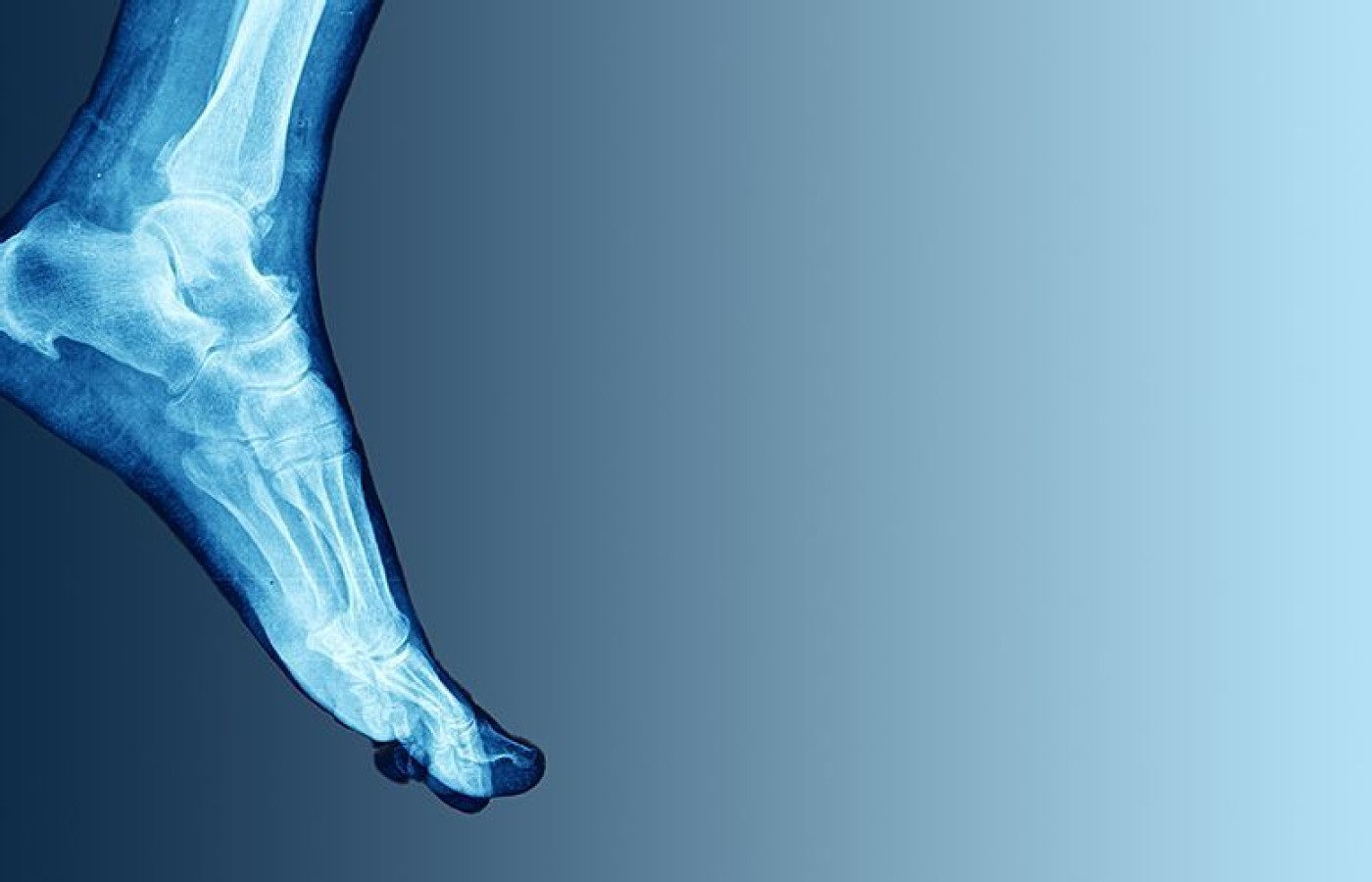MRI is currently the gold standard for identifying radicular pathology, but unfortunately, it requires preauthorization, which isn’t easy to obtain. Physical tests are what most practitioners depend on – despite the marginal reliability of the tests. The information in this article brings history and observation to the forefront of radicular diagnostics. Each factor listed can significantly increase the clinician’s ability to diagnose radiculopathies.
Ankle Manipulation & the Hip
In a study published last year in JMPT titled "Effects of Tibiofibular and Ankle Joint Manipulation on Hip Strength and Muscle Activation," our group was able to show that ankle adjusting had a positive, lasting impact on hip abductor force production and activation in subjects with a prior history of ankle sprain.
Background
Hip abductor weakness after ankle sprain is a fairly well-known (and supported1) clinical entity. Additionally, numerous studies have shown changes in gluteal muscle activation after ankle sprain2 or in those with chronic ankle instability (CAI).3-6 Two studies4-5 that evaluated the gluteus maximus (GMax) during functional tasks demonstrated facilitation, one of which supported a centralized "feed-forward" mechanism in CAI patients.4

At least one author suggests CAI individuals compensate for reduced gluteus medius (GMed) activity with GMax facilitation.5 (Anatomically, this seems logical, as the superior fibers of GMax assist GMed in hip abduction.) I should also add that clinically, these patients often exhibit signs of gluteus minimus and/or piriformis compensation, although to my knowledge no one has looked at their activation levels in this context.
Methods
Our study was designed as a proof of concept, and as such was kept deliberately simple. Twenty-five participants were recruited (mostly DPT students – a perfect population, as they tend to be young and healthy, but banged up with old sports injuries). Included were those with a history of ankle sprain and unilateral hip abductor weakness, as measured with a TFL manual muscle test (MMT). [We chose this over GMed as clinically, I initially believed TFL MMT to be more sensitive to ankle joint complex (AJC) dysfunction and less prone to lumbopelvic issues.] Excluded were those who failed a hip flexion MMT, along with anyone with contraindications to ankle manipulation.

Force production was measured before and after a single round of ankle manipulation and again 48 hours later, using a custom-designed rig holding a force transducer along with appropriate blinding. TFL and GMed muscle activation were measured via surface EMG.
Intervention
Based on motion palpation, I performed HVLA manipulations to all four joints of the AJC on the affected side of each subject, utilizing hand contacts, but with the thrust coming from the legs. (I prefer this adjustment, as you can deliver significantly more force with your hamstrings and glutes than with your arms.) We tracked what was adjusted, and while only about half of the proximal and 68 percent of the distal tib-fib joints required release, 100 percent of the talocrural and subtalar joints cavitated.
Results

Immediately after manipulation, there was an increase of 12.2 percent average and 9.8 percent maximum GMed activation. Forty-eight hours after manipulation, average hip abductor force production increased 18.5 percent and maximal force production 14.2 percent. No significant changes were observed in the uninvolved leg.
Take-Home Points
This study was able to demonstrate that HVLA ankle joint manipulation can improve hip abductor muscle function in individuals with a history of ankle sprain, – the first time this has been shown. As chiropractors, we are used to thinking of the downstream effects of nerve root irritation. Importantly, however, there are also upstream mechanisms at play that warrant our attention.
In sharing our study with others (not just DCs, but also DPTs and sports allopaths), this proximal effect is what gets keyed in on the most, and is what helped the study garner a top-five research award from the American Academy of Orthopedic Manual Physical Therapists – a nice interdisciplinary kudo.
To be honest, I didn't initiate this study to win awards or because this study seemed like a next logical step in the literature. I am first and foremost a clinician; I simply hoped to validate a unique treatment aspect I had already been utilizing for years.
Clinically speaking, I can tell you that the converse of our findings is also true: By not addressing ankle subluxations, you may inadvertently perpetuate hip abductor inhibition, which can factor into a myriad of issues including lower back, hip and knee conditions.
Author's Note: In part 2 of this article, I'll apply this information to what should prove relevant to a majority of readers: how these findings apply clinically, and how MMT and ankle manipulation can help you better treat your patients.
References
- Friel K, McLean N, Myers C, et al. Ipsilateral hip abductor weakness after inversion ankle sprain. J Athl Train, 2006 Jan-Mar;41(1):74-8.
- Bullock-Saxton JE, Janda V, Bullock MI. The influence of ankle sprain injury on muscle activation during hip extension. Int J Sports Med, 1994 Aug;15(6):330-4.
- Koldenhoven RM, Feger MA, Fraser JJ, et al. Surface electromyography and plantar pressure during walking in young adults with chronic ankle instability. Knee Surg Sports Traumatol Arthrosc, 2016;24(4):1060-1070.
- Webster KA, Pietrosimone BG, Gribble PA. Muscle activation during landing before and after fatigue in individuals with or without chronic ankle instability. J Athl Train, 2016;51(8):629-636.
- Koldenhoven RM, Fraser JJ, Saliba SA, et al. Ultrasonography of gluteal and fibularis muscles during exercises in individuals with a history of lateral ankle sprain. J Athl Train, 2019 Dec;54(12):1287-1295.
- DeJong AF, Koldenhoven RM, Hart JM, et al. Gluteus medius dysfunction in females with chronic ankle instability is consistent at different walking speeds. Clin Biomech, 2020 Mar;73:140-148.



